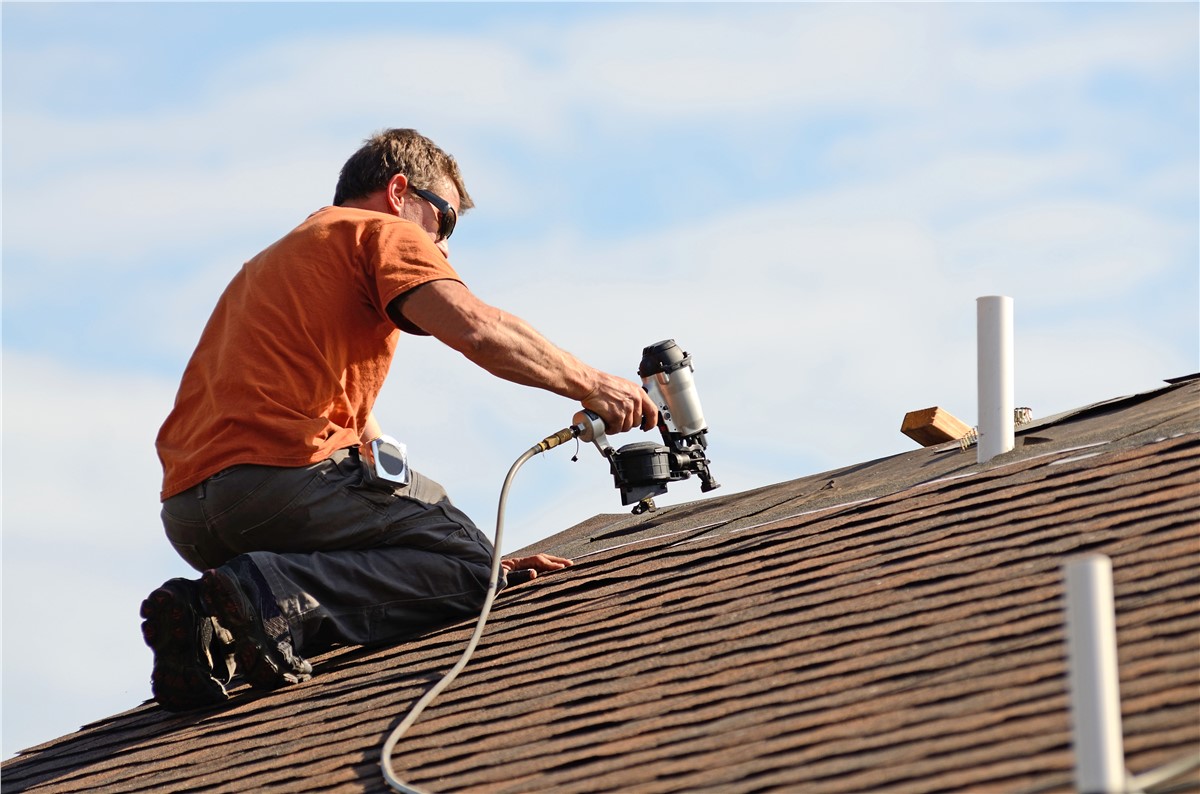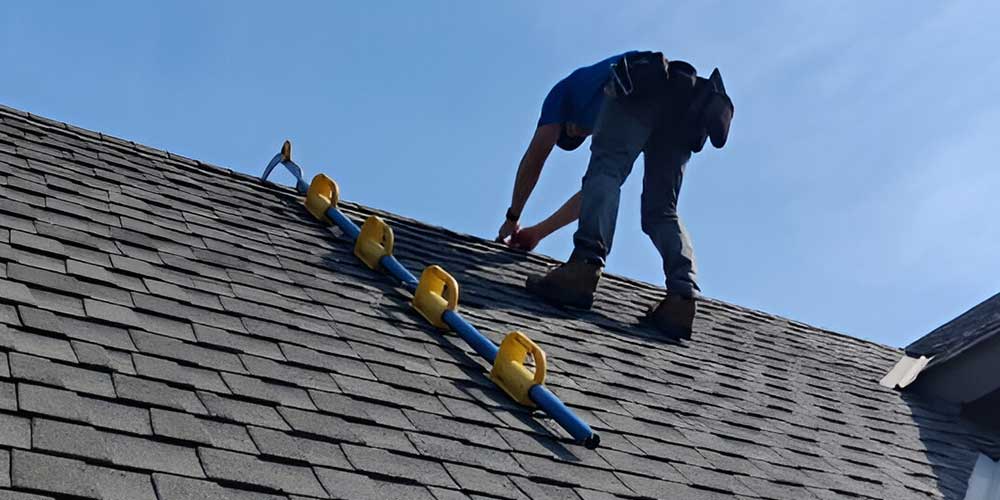Comprehending the Various Kinds Of Roof Coverings: A Comprehensive Overview for Homeowners
In the world of homeownership, selecting the appropriate roof covering style is a decision that carries substantial effects for both performance and visual appeal. With a range of options-- ranging from the conventional gable to the modern level-- each kind provides distinct benefits and challenges that need to line up with the property owner's certain requirements and environmental factors to consider. Comprehending these differences not only help in making an educated option however additionally affects long-lasting maintenance and power performance. As we explore the intricacies of numerous roofing system types, it comes to be obvious that size does not fit all; the right choice might stun you.
Saddleback Roof
Gable roofs, identified by their triangular form, are amongst the most preferred roof covering designs due to their simplicity and efficiency in dropping water and snow. This design features two sloping sides that satisfy at a ridge, enabling effective drain and lessening the danger of water buildup. The high pitch typically connected with gable roofs enhances their capacity to take care of hefty rainfall, making them suitable for various climates.
In addition to their practical benefits, gable roofs provide aesthetic versatility. They can be adjusted to different building designs, from traditional to modern-day homes. The style can additionally suit added features such as dormer home windows, which boost natural light and air flow in the attic room space.
Furthermore, saddleback roofs give adequate space for insulation, adding to energy performance. House owners can select from a variety of roofing materials, consisting of asphalt tiles, steel, and ceramic tiles, better boosting customization alternatives.
Despite their benefits, saddleback roofs may call for additional support in locations susceptible to high winds or heavy snowfall. Overall, the saddleback roof continues to be a popular option due to its mix of functionality, resilience, and visual appeal.
Flat Roofs
Flat roofing systems are frequently identified for their minimalist style and functional applications, specifically in industrial and industrial setups (oahu roofing). These roofs include a nearly straight or straight surface, which enables very easy building and construction and functional area utilization. While they might do not have the aesthetic appeal of pitched roof coverings, flat roofing systems offer countless advantages, particularly in metropolitan atmospheres where maximizing room is vital
One of the key benefits of level roofs is their access. Home owners can make use of the roof covering space for numerous purposes, such as rooftop yards, terraces, or solar panel setups. Additionally, level roofing systems are generally much more economical to install and preserve contrasted to their sloped equivalents, as they require less materials and labor.
However, level roof coverings do existing particular obstacles. Correct drain is important to stop water pooling, which can result in leakages and structural damages. Therefore, selecting top quality waterproofing materials and regular examinations are important for ensuring long life. Typical products made use of for flat roofing systems include built-up roof (BUR), modified bitumen, and single-ply membranes, each offering unique benefits. Generally, level roofs function as a useful and versatile choice for many house owners and services alike.
Hip Roofs
Hip roofs are characterized by their sloped sides that assemble on top, forming a ridge. This layout stands out from gable roofing systems, as all four sides of a hip roof slope downwards towards the wall surfaces, giving an extra steady structure. Learn More The angle of the inclines can differ, allowing for versatility in building aesthetics and performance.
Among the main advantages of hip roofing systems is their capability to withstand heavy winds and adverse climate condition. The sloped surfaces enable much better water drainage, decreasing the risk of leaks and water damage. In addition, hip roofing systems use raised attic room space, which can be made use of for storage and even transformed into livable areas.
Nevertheless, constructing a hip roof covering can be extra complex and expensive than less complex roofing kinds, such as saddleback roofs. The added material and labor associated with developing the inclines and making sure appropriate architectural integrity can result in greater costs. Regardless of these downsides, lots of homeowners prefer hip roof coverings for their durability, visual allure, and capacity for energy effectiveness.
Mansard Roof Coverings
Mansard roofings, commonly acknowledged by their unique four-sided style, attribute two inclines on each side, with the reduced slope being steeper than the top. This architectural design, stemming from France in the 17th century, is not just visually enticing yet functional, as it maximizes the usable room in the upper floorings of a building. The high reduced slope enables more clearance, making it an excellent choice for attic rooms or loft spaces, which can be exchanged living areas.
Mansard roofing systems are identified by their convenience, accommodating various architectural styles, from typical to contemporary. They can be built with different products, including asphalt roof shingles, slate, or metal, providing homeowners with a series of options to suit their preferences and budget plans. Furthermore, the design enables for the combination of dormer home windows, boosting natural light and air flow in the upper degrees.
Nonetheless, it is vital to take into consideration the prospective downsides. Mansard roofings visit this web-site might call for more upkeep due to the intricacy of their style, and their high slopes can be testing for snow and rain overflow. On the whole, mansard roofing systems incorporate sophistication with usefulness, making them a prominent option among property owners seeking unique building attributes.
Dropped Roofing Systems
As property owners significantly seek simplicity and performance in their building layouts, dropped roofings have actually arised as a preferred choice. Characterized by a solitary sloping plane, a shed roofing presents a minimal visual that complements different home styles, from modern to rustic.
One of the key benefits of a shed roofing system is its simple construction, which usually translates to reduce labor and material expenses. This layout permits for efficient water drainage, lowering the threat of leakages and water damages. In addition, the upright incline supplies sufficient area for skylights, enhancing natural light within the interior.
Dropped roofing systems also supply adaptability in regards to usage. They can be properly incorporated right into additions, garages, or outside structures read more like sheds and pavilions. Furthermore, this roofing system design can fit numerous roof products, consisting of metal, asphalt shingles, and even environment-friendly roofing systems, straightening with environmentally friendly initiatives.
However, it is vital to take into consideration regional environment conditions, as heavy snow tons may require changes to the roofing's angle or structure. Generally, lost roofing systems offer a practical and visually pleasing option for home owners looking to maximize performance without jeopardizing style.
Verdict


Gable roofings, identified by their triangular form, are among the most prominent roof designs due to their simpleness and efficiency in shedding water and snow. oahu roofing. The high pitch generally associated with gable roof coverings enhances their ability to deal with hefty rainfall, making them suitable for numerous environments
While they might lack the visual charm of pitched roofing systems, level roofs provide various advantages, specifically in metropolitan environments where making best use of area is critical.
